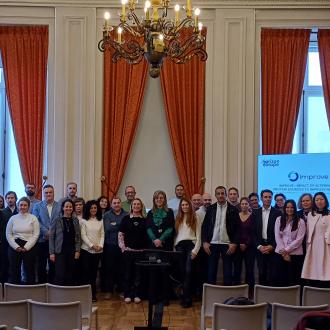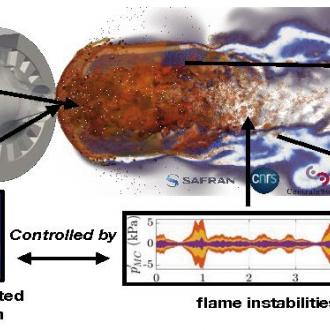
LuMIn, an acronym for "Light, Matter and Interfaces", succeeded the Laboratory of Quantum and Molecular Photonics (LPQM) on 1 January 2020.
This new laboratory is the union of the former LPQM, half of the Aimé Cotton Laboratory, and teams or colleagues from the SATIE and PPSM laboratories of ENS Paris-Saclay, C2N, UVSQ, IOGS.
The number of permanent members (technical and administrative staff, researchers, teacher-researchers) has thus risen from a dozen to 35.
LuMIn in brief :
Four guardianships:
- CNRS-INSIS,
- ENS Paris-Saclay,
- CentralSuperlec,
- Paris-Saclay University.
Director: Fabien Bretenaker, DR CNRS.
Deputy Director: Bruno Palpant, PU CentraleSupélec.
3 nearby sites: CentraleSupélec in Gif-sur-Yvette, ENS Paris-Saclay in Gif-sur-Yvette and building 505 in Orsay.
This new laboratory aims to promote themes in the stimulating environment of the Saclay Plateau, whose common base is photonics, but whose particularity is that it is located at the interface of many other fields, such as chemistry, biology, biomedical, engineering sciences, nanosciences, microfluidics, etc.
LuMIn is divided into two axes presenting original and very ambitious projects, one focused on photonics of life, strongly positioned in interdisciplinarity with biology, the other focused on light-matter interaction, also bringing together first level international teams on a wide range of topics:
Axis 1: Multi-scale light-matter interactions: from the atom to the device
Light-matter interactions with atoms, molecules, diamond NV centers, nanoparticles, organic and hybrid materials
Wide range of applications: nanothermal phenomena, optical and RF communications, photovoltaics, sensors, microlasers, quantum technologies and information storage, single photon sources, optomagnetic devices, microfluidics, etc.
Axis 2: Optics and microtechnologies applied to the living world
Application of optics to the exploration of nanostructures and living objects :
New optical imaging tools (time-resolved fluorescence, 2-photon fluorescence, frequency doubling, electro-optical microscopy, retinal imaging).
In vitro and in vivo electrophysiology techniques
Opto and electrofluidic systems
Biological objects studied :
Synapses, neurons, astrocytes, brain tissue...
Tissue growth by bioengineering




